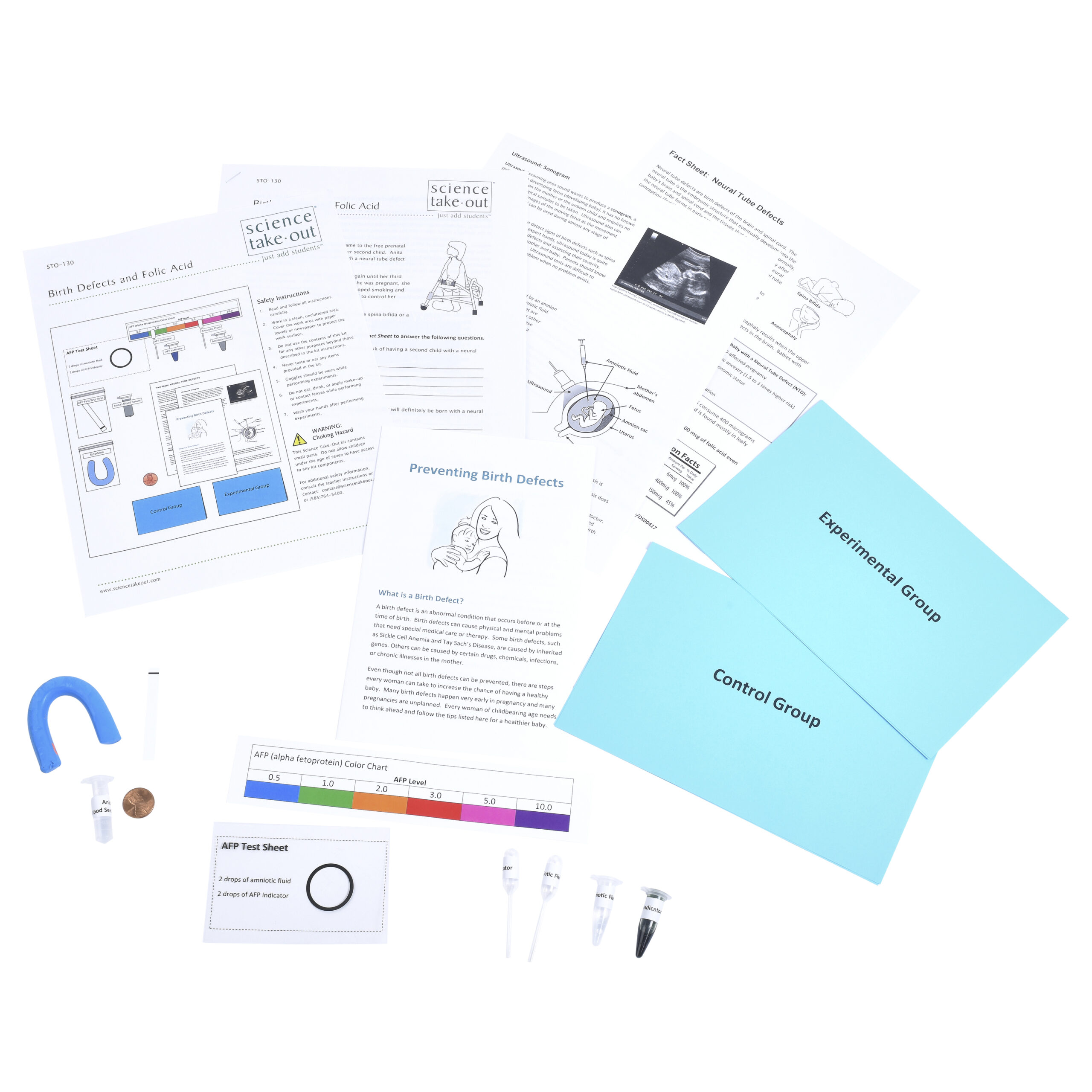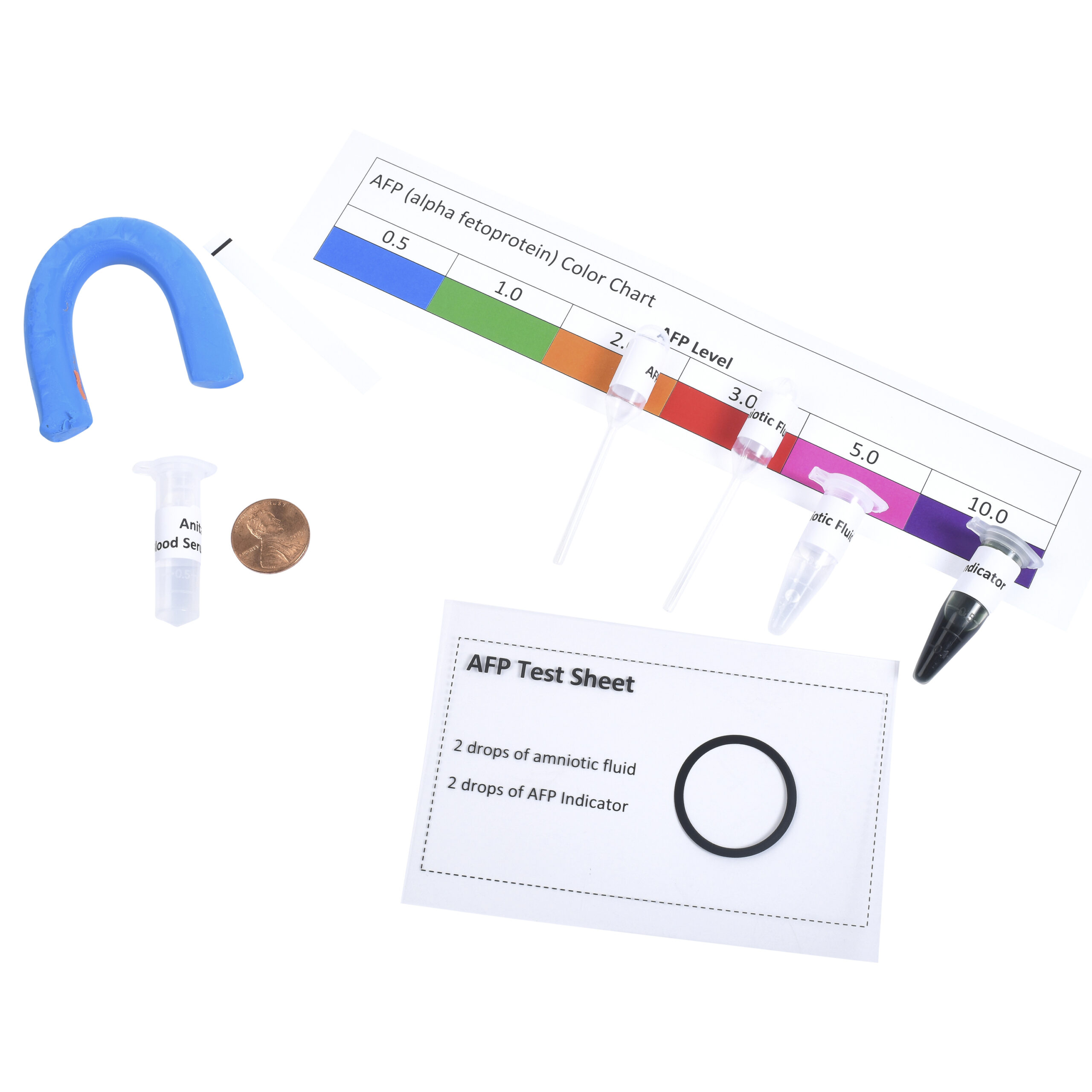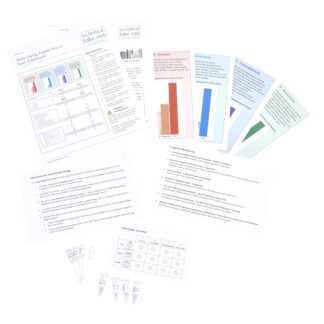Birth Defects and Folic Acid
$17.95 – $125.95Price range: $17.95 through $125.95
Quantity Discounts Available! →
How does folic acid prevent neural tube defects?
Follow the case of a pregnant woman who is concerned that her developing baby is at risk for spina bifida, a birth defect.
- Test the mother’s “blood” and “amniotic fluid” for alpha-fetoprotein, an indicator for potential birth defects.
- Interpret the results of a sonogram.
- Make a clay model of the developing nervous system.
- Learn about clinical trial research studies.
- Explore the importance of prenatal care for preventing birth defects.
Kit Includes
- Student instructions
- 1 tube of simulated “Anita’s Blood Serum”
- 1 tube of simulated “Amniotic Fluid”
- 1 tube of simulated “AFP Indicator”
- 2 labeled droppers
- AFP Fast-Test Strip
- AFP Test Sheet
- AFP Color Chart
- “Ectoderm” (clay)
- Neural Tube Defects Fact Sheet
- Ultrasound and Amniocentesis information sheet
- Experimental Group card
- Control Group card
- 1 penny
- Preventing Birth Defects brochure
Quantity Discounts
Kits:
- 1 – 9 kits: $17.95 each
- 10 – 24 kits: $17.05 each
- 25+ kits: $16.16 each
Unassembled:
- 1 – 9 packs: $125.95 each
- 10+ packs: $119.65 each
Refills:
- 1 – 9 packs: $38.95 each
- 10+ packs: $37.00 each
Correlation to Next Generation Science Standards (NGSS) Shop by NGSS »
Performance Expectations:
MS-LS1-5. Construct a scientific explanation based on evidence for how environmental and genetic factors influence the growth of organisms.
Science & Engineering Practices
Constructing Explanations - Construct a scientific explanation based on valid and reliable evidence obtained from sources (including the students’ own experiments) and the assumption that theories and laws that describe the natural world operate today as they did in the past and will continue to do so in the future.
Disciplinary Core Ideas
LS1.B: Growth and Development of Organisms - Genetic factors as well as local conditions affect the growth of organisms
Crosscutting Concepts
Cause and Effect - Phenomena may have more than one cause, and some cause and effect relationships in systems can only be described using probability





